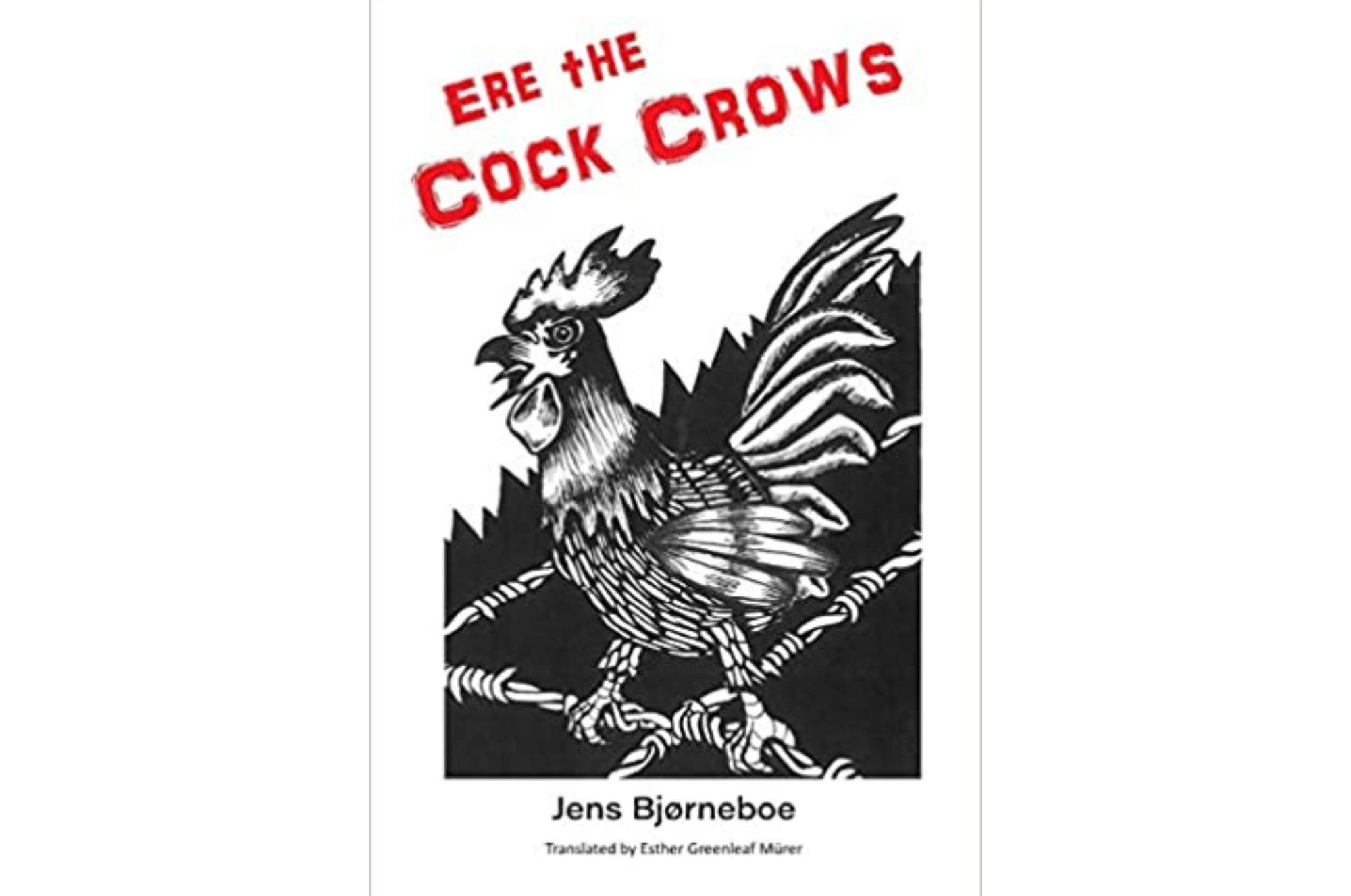Esther Greenleaf Mürer’s accessible 2021 translation of Jens Bjørneboe’s 1952 novel Ere the Cock Crows marks the first English-language edition of the text. The volume also contains a recreation by Mürer of the lost play that served as the basis for the novel after Bjørnboe had failed to get it produced, as well as an illuminating essay explaining Bjørnboe’s philosophical background. The deeply disturbing novel is the story of the moral degeneration of Dr. Reynhardt, an idealist doctor and family man in Nazi Germany who nonetheless oversees the horrific medical experiments performed at concentration camps. The first of Bjørnboe’s novels to be published, Ere the Cock Crows has been criticized for its confusing narrative structure and, perhaps consequently, it is less well-known than Bjørnboe’s later works; however, I think this criticism is overstated. With the aid of Mürer’s excellent essay, everything becomes clear, and the novel itself is a masterful tale of human evil—and the faint possibility of redemption. It’s a valuable introduction for English-speakers into the work of one of the best-known Norwegian authors who is often overlooked outside Scandinavia.
Though the transition between the first and second sections of the novel is abrupt and a bit jarring, the structure is, in fact, simple enough. The first “frame” story is set in 1947 Germany and is narrated by a Norwegian journalist reckoning with and researching Nazi horrors. (It is interestingly reflective of Bjørnboe’s experiences after the war; he himself traveled to Germany and even met the immediate family of one of the Nazi doctors in charge of the medical experiments.) The second section is better written and makes up the bulk of the novel: the story of Dr. Reynhardt, involved in the experiments at the height of Nazi power in 1940, is told in third person. In her essay, Mürer argues convincingly that it was this section that made up the original play.
The title of Ere the Cock Crows refers to Peter’s betrayal of Christ; in the gospels of Matthew and John, Jesus tells Peter “thrice wilt thou deny me ere the cock crows.” Again, in her essay, Mürer convincingly shows how the second section of the novel is structured around Dr. Reynhardt’s three failures to recognize evil and turn away from it; these form the basic drama of the plot. Reynhardt’s refusal to face the depravity of his actions is challenged by the arrival at the camp of his Jewish childhood friend, Samuel, as a prisoner. The director of the camp, Heidenbrand, is presented in contrast: a childhood friend of both Samuel and Reynhardt, he acknowledges the evil he performs and openly admits that it is for purely selfish motives. Readers are left wondering if this is at least better than hypocrisy. The novel closes with a twist that hints at the possibility of redemption for one of these characters.
Mürer’s reconstruction of the play seems plausible, and it’s narratively neater than the novel, but without the characters’ internal impressions it loses much of the novel’s depth. In retrospect, it seems more valuable for what it contributed to the novel, which is full of dialogue and detailed descriptions of action. The immediacy is one of its greatest strengths because it impresses on us the possibility—and not just the possibility, but the actual historical reality—of the actions of those involved.
The horror in Ere the Cock Crows is all moral, not physical. There are ghastly descriptions of atrocities related clinically, but they are only descriptions—they are never onstage in Mürer’s reconstruction of the play, and they are never immediate in the novel. I wonder here at Bjørnboe’s intent. Did he accept the impossibility of portraying the actual depth of suffering caused by the Nazis’ crimes, and so focus on what he could effectively portray and leave the rest to the imagination? Was he showing some measure of respect to the victims? Did he trust his audience to understand what he wasn’t showing, or did he think they couldn’t handle the gruesome reality (the play was reportedly rejected for being unpalatable)? In a way the exclusion of the actual atrocities lets the reader get away with what Reynhardt did—the recognition of his victims’ humanity and suffering is not forced on us. I would be interested to see what choices a good director would make here if the Ere the Cock Crows script was ever produced.
Ere the Cock Crows is poorly printed; I noticed several significant typos on my first reading, as well as distracting formatting issues. Such a fine book deserves more care. Still, we should be grateful for Mürer’s achievement. Ere the Cock Crows is of interest not just to scholars, but to any reader interested in the struggle between good and evil in every human soul.
Ere the Cock Crows
By Jens Bjørneboe
Translated by Esther Greenleaf Mürer
Frayed Edge Press
Published May 25, 2021
292 pages

Grace Fisher is a junior double-majoring in English and Dance. She enjoys writing literary analysis, argumentative essays, and poetry. Her favorite authors are Dorothy Dunnett, C.S. Lewis, Gerard Manley Hopkins, and Dostoevsky.
